Last updated on December 26th, 2023 at 11:18 am
The Exhaust Gas Re-circulation (EGR), is one of the most important components for all truck built in the past two decades. The EGR valve is responsible for the reduction of emission. Once the temperature of the combustion in the chamber hits around 2500 degrees Fahrenheit, it starts increasing the production of (NOx)Nitrogen Oxides. While the exhaust of a standard vehicle is mostly (CO2)Carbon Dioxide which by the way does not burn.
The Exhaust Gas Recirculation (EGR) valve plays a critical role in reducing vehicle emissions, an endeavor increasingly important in the context of global environmental concerns. Introduced in response to heightened emissions regulations, the EGR valve mitigates the release of harmful pollutants by recirculating a portion of an engine’s exhaust gas back to the engine cylinders. This process lowers combustion temperatures and reduces the production of Nitrogen Oxides (NOx), thereby minimizing the environmental impact of automobiles. The advent of the EGR valve represents a significant step towards more eco-friendly automotive technologies, mirroring the broader drive towards sustainability that has characterized the industry’s evolution in recent decades.
Basic Function and Principle Definition: What is an EGR Valve?
An Exhaust Gas Recirculation (EGR) valve is a component designed to reduce pollution from vehicle emissions. Fundamentally, the EGR valve mitigates the release of harmful pollutants by recirculating a part of the engine’s exhaust gas back to the engine cylinders.
Working Principle
The EGR valve functions by diverting a proportion of the exhaust gases back into the engine’s combustion chamber. When the engine is running, a small amount of exhaust gas is redirected through the EGR valve, mixed with incoming air and fuel, and then reintroduced into the combustion chamber. This process is controlled by the EGR valve, which opens or closes to adjust the volume of exhaust gases recirculated.
Impact on Combustion Temperature and Emission Reduction
The introduction of exhaust gases into the combustion chamber has the effect of lowering the combustion temperature. This is because exhaust gases do not burn and take up space in the cylinder, effectively reducing the amount of oxygen available for the combustion process. As a result, the temperature is lowered, reducing the production of nitrogen oxides (NOx) – a major source of pollution. Thus, by controlling the recirculation of exhaust gases, the EGR valve plays a critical role in emission reduction, contributing significantly to automotive environmental sustainability.

Types of EGR Valves
There are two main types of EGR valves: Mechanical/Electromechanical EGR Valves and Electronic/Vacuum Controlled EGR Valves.
Mechanical/Electromechanical EGR Valves
Mechanical or Electromechanical EGR Valves are the earlier versions of this technology. They are operated by direct mechanical control from the engine, reacting to changes in manifold vacuum or exhaust back-pressure. Their main advantage is simplicity and reliability, but they lack the precision of newer types.
Electronic/Vacuum Controlled EGR Valves
Electronic or Vacuum Controlled EGR Valves are the modern iteration of EGR technology. They are controlled by the engine’s electronic control unit (ECU), which regulates the valve’s operation based on multiple input parameters like engine speed, load, temperature, and throttle position. These valves offer greater precision and control, ensuring optimal recirculation at all engine operating conditions.
Differences and Evolution over Time
Over time, the technology has evolved from the less precise mechanical EGR valves to the more efficient and sophisticated electronic EGR valves. The earlier mechanical valves were simpler and more robust, but they did not offer the fine control over the recirculation process needed to maximize NOx reduction while minimizing impact on engine performance. The advent of electronic control for EGR valves has allowed for this delicate balancing act, optimizing emissions reduction without compromising engine efficiency and performance. This evolution in EGR valve technology is a clear example of the automotive industry’s ongoing efforts to improve environmental sustainability.
EGR Valve’s Role in Emission Control
The EGR valve’s role in emission control is significantly important, particularly in its ability to mitigate the generation of nitrogen oxides (NOx). Nitrogen oxides are notorious for their detrimental environmental and health impacts, contributing to issues such as acid rain, smog, and respiratory problems in humans. By reducing combustion temperature, the EGR valve directly curtails the formation of these harmful gases, thereby playing an integral part in emission control.
The EGR valve’s contribution to environmental protection is substantial. Not only does it help in decreasing the emission of pollutants, but it also facilitates compliance with stringent emission standards enforced by environmental authorities worldwide. The valve’s ability to precisely control the volume of recirculated exhaust gases allows car manufacturers to meet these regulatory requirements, making it a crucial component in the journey towards more sustainable automotive technologies.
What are the symptoms of a faulty EGR valve?

Signs of a Failing EGR Valve
The Exhaust Gas Recirculation (EGR) valve, while a key component in reducing emissions and promoting environmental sustainability, can fail over time due to various reasons such as excessive carbon build-up or wear and tear. When this happens, it can cause some noticeable symptoms that indicate a problem with the EGR valve.
Common Symptoms
- Rough Idling: The engine may have an uneven or rough idle, characterized by the engine shaking or vibrating while the car is stationary with the engine running.
- Reduced Engine Performance: There might be a noticeable decrease in the car’s acceleration power, and the vehicle might feel sluggish during operation.
- Fuel Odor: If the EGR valve is stuck open, it can lead to a strong fuel odor due to unburned fuel making its way into the exhaust system.
- Increased Emissions: A faulty EGR valve can lead to increased emissions, particularly of Nitrogen Oxides (NOx), as the valve is unable to carry out its function of recirculating exhaust gases.
- Engine Warning Lights: Modern vehicles come equipped with an array of sensors that monitor the performance of various systems. If the EGR valve is malfunctioning, it may trigger the “Check Engine” or “Service Engine” light.
Diagnostic Methods
Diagnosing a faulty EGR valve can be achieved through a combination of the following methods:
- Electronic Diagnosis: Using an OBD II scanner can help identify any fault codes related to the EGR valve. These codes can provide specific information about the nature of the problem.
- Visual Inspection: A visual inspection can sometimes reveal problems such as a clogged valve or problems with the vacuum hose connected to the valve.
- Performance Tests: A mechanic can conduct performance tests, such as a stall test, to check engine performance and gauge if the EGR valve could be the source of the problem.
Maintenance and Replacement of EGR Valve
Maintenance Tips
Regular maintenance of the EGR valve can significantly extend its lifespan and ensure optimal performance. One of the prime maintenance activities includes cleaning. Over time, the EGR valve can accumulate carbon deposits, affecting its operation. A carbon cleaner or a throttle body cleaner can be used to remove these deposits. Besides cleaning, regular check-ups are also crucial. It’s advisable to have a professional mechanic inspect the EGR valve during routine servicing of your vehicle.
Replacement Process
The decision to replace an EGR valve usually comes when the valve is beyond repair or cleaning doesn’t rectify its malfunctioning. The replacement process involves first locating the EGR valve in the engine bay. The valve is then detached by removing bolts or screws and disconnecting any connected wires or hoses. The new valve is installed in its place and reconnected. Always refer to the vehicle’s manual or consult a professional mechanic for the replacement process specific to your vehicle model.
Cost Considerations
The cost of replacing an EGR valve can vary widely depending on the make and model of your vehicle, the region you live in, and whether you are using a dealer, an independent mechanic, or doing it yourself. On average, the costs can range from $150 to $600, inclusive of parts and labor. Remember, preventing EGR valve failure through regular maintenance can help you avoid these costs.
Impact on Engine Performance
The EGR valve has a dynamic impact on the performance of an engine, with implications that can be both positive and potentially problematic.
Positive Impacts
Improved engine efficiency and longevity stand out as key positive impacts of the EGR valve. By recirculating a portion of the engine’s exhaust gas back to the engine cylinders, the EGR valve reduces the cylinders’ temperature, minimizing the levels of Nitrogen Oxides (NOx) produced. This reduction in temperature not only contributes to lower emissions but also prevents the engine from overheating, thereby boosting its efficiency. Furthermore, this temperature regulation contributes to reducing the wear and tear of engine components, potentially extending the engine’s lifespan.
Potential Issues
EGR valve malfunction, however, can cause a range of issues affecting engine performance. These can include reduced engine efficiency, as a faulty valve may no longer properly regulate combustion temperature. Likewise, engine power may be compromised, with drivers experiencing decreased horsepower and acceleration capabilities. Fuel economy may also take a hit, as a malfunctioning EGR valve can lead to a richer fuel mixture, causing an increase in fuel consumption. Furthermore, a faulty EGR valve can cause the engine to idle roughly and may even lead to engine stalling. These potential issues underscore the importance of regular maintenance and timely replacement of the EGR valve to ensure optimal engine performance.
EGR Valve Across Different Car Makes and Models
The EGR valve design and functionality can vary significantly across different car makes and models due to differing engine requirements, emission standards, and manufacturer preferences.
Case Study: Toyota Camry
In the popular Toyota Camry, for instance, the EGR valve plays a crucial role in maintaining the vehicle’s renowned fuel efficiency. Toyota uses a digitally-controlled EGR system, which allows for precise control over the exhaust gas recirculation, contributing to optimal combustion and reduced emissions.
Case Study: Ford F-150
On the other hand, Ford F-150, a leading model in the pickup truck category, uses an EGR valve designed to handle the vehicle’s higher power and performance demands. This valve is built to withstand the rigors of heavy-duty use, and its failure could significantly impact the truck’s towing and hauling capabilities.
Case Study: Honda Civic
The Honda Civic, known for its reliability and longevity, employs an EGR valve that is critical in ensuring the smooth and efficient performance of its engine. Honda integrates its EGR system directly into the intake manifold, a design that simplifies the plumbing and increases the system’s effectiveness in reducing NOx emissions.
Advanced Section: Technical Deep Dive
Exploring the EGR system, we find it composed of several key components, each with a unique role in managing engine emissions and efficiency.
EGR Valve
The Exhaust Gas Recirculation (EGR) valve is the heart of the EGR system. It works by opening and closing at specific intervals, controlled by the engine control unit (ECU), to allow a certain amount of exhaust gases back into the engine’s combustion chamber. By doing so, it helps to reduce the combustion temperature, consequently minimizing Nitrogen Oxide emissions.
EGR Cooler
Just as its name implies, the EGR cooler’s function is to cool down the recirculated exhaust gases before they re-enter the engine. This component is crucial as it aids in maintaining the engine’s temperature within an optimal range, which can prevent damage to engine components and uphold its performance standards.
EGR Sensors
The EGR system is operated through a network of sensors that constantly monitor and regulate its performance. Important sensors include the EGR valve position sensor, which ensures the correct positioning of the EGR valve, and the EGR temperature sensor, which monitors the temperature of the recirculated gases. These sensors feed information back to the engine control unit (ECU), which adjusts the EGR system operation based on these inputs.
The EGR system doesn’t work in isolation; it interacts significantly with other engine management systems. One such management system is the Engine Control Module (ECM) or the Powertrain Control Module (PCM). The ECM/PCM uses data from various engine sensors, including those in the EGR system, to determine the best timing and quantity for exhaust gas recirculation. This interaction ensures optimal engine performance while keeping emissions within acceptable limits.
Troubleshooting and FAQs: Common Problems and Solutions
Facing issues with your EGR system can be daunting. This section will address some common problems and their solutions, along with frequently asked questions about the EGR valve.
Common Problems and Solutions
Problem: “Check Engine” light is on.
Solution: This could be indicative of a faulty EGR valve. Consider using an OBD-II scanner to read the error code. If the problem is EGR related, the error code will often start with P040.
Problem: Vehicle has reduced power or poor fuel efficiency.
Solution: These could be symptoms of a stuck open EGR valve, which allows exhaust gases to constantly re-enter the combustion chamber, affecting combustion efficiency. The valve may need cleaning or replacement.
Problem: Vehicle idles roughly or stalls.
Solution: A clogged or stuck closed EGR valve could be at fault. In such cases, the valve should be either cleaned or replaced.
Frequently Asked Questions
Q: How do I know if my EGR valve needs replacement?
A: Symptoms of a failing EGR valve include a rough idle, decreased fuel efficiency, engine stalling, and a lit “Check Engine” light. A diagnostic test can confirm whether the EGR valve is at fault.
Q: How often should I replace my EGR valve?
A: The EGR valve doesn’t have a specific replacement interval. Instead, it should be replaced when it becomes faulty or starts showing symptoms of failure.
Q: Can I drive with a failing EGR valve?
A: While it might be possible to drive with a faulty EGR valve, it’s not recommended due to the potential for increased emissions, reduced engine performance, and possible damage to engine components.
Q: Are EGR valves vehicle-specific?
A: Yes, EGR valves are designed to meet the specific engine requirements of different vehicle makes and models. Always ensure you get the right EGR valve for your vehicle when considering replacement.
Conclusion and Future Outlook
The Exhaust Gas Recirculation (EGR) valve is a key component in modern vehicles, playing a crucial role in ensuring optimal combustion, fuel efficiency, and reduced Nitrogen Oxide emissions. As emission standards tighten and automotive technology advances, the EGR system will face new challenges and opportunities. It must adapt to more sophisticated engine designs while meeting demands for improved fuel economy and reduced greenhouse gas emissions. The EGR valve, at the heart of this system, will undergo significant transformations in design, functionality, and integration with other engine components. Understanding its working, issues, and solutions is vital for automotive professionals and vehicle owners alike, ensuring optimal vehicle performance, longevity, and environmental sustainability.






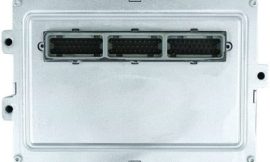
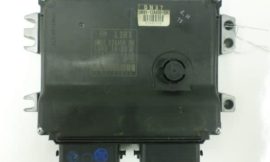



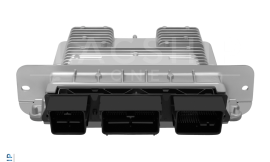
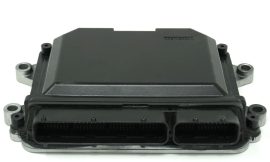

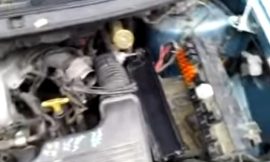

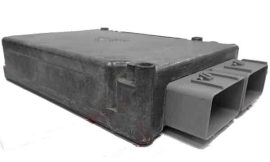


Tengo un chevrolet colorado ltz 2.8 diesel 2018, . Al momento de reemplazar un sensor , cual es el procedimiento?
Ejemplo sensor MAP
Sensor o valvula EGR